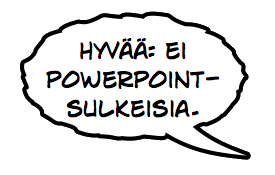Tick-the-Code - julkaisut
Happy Are The Software Engineers.. (artikkeli)
Ensimmäinen koskaan kirjoittamani julkaisu on nimeltään "Happy Are The Software Engineers.." ("Onnellisia ovat ohjelmistosuunnittelijat..") ja se ilmestyi Better Software-lehdessä joulukuussa 2006. Artikkeli kuvaa kaikessa lyhykäisyydessään, kuinka täydellinen keskittyminen voi luoda onnellisuuden tunteen, erityisesti jos tehtävä on mielekäs. Halusin osoittaa, että ohjelmistolaatutyö on mielekästä ja että Tick-the-Code -menetelmällä on mahdollista uppoutua täydelliseen keskittymisen tilaan.
Tiivistettynä: onnea on Tick-the-Code.
Tick-the-Code Inspection: Theory and Practice
Ensimmäinen tieteellinen artikkelini on nimeltään "Tick-the-Code Inspection: Theory and Practice" (Tick-the-Code -katselmointi: teoria ja käytäntö) ja se ilmestyi vertaistarkistetussa ASQ (American Society for Quality, Amerikan Laatuliitto) lehdessä nimeltä Software Quality Professional.
Kuten nimi kertoo, artikkelini paljastaa kaikki Tick-the-Code -menetelmän yksityiskohdat aina 24 koodaussääntöön asti. Artikkeli on kattavin kirjoitettu lähde Tick-the-Code -menetelmästä.
Tick-the-Code Inspection: Empirical Evidence (on Effectiveness)
Toinen tieteellinen artikkeli on nimeltään Tick-the-Code Inspection: Empirical Evidence (on Effectiveness) (Tick-the-Code -katselmointi: empiirisiä todisteita (tehokkuudesta)). Kirjoitettuani artikkelin esitin sen ensimmäisen kerran Pacific Northwest Software Quality Conference (PNSQC)-konferenssissa lokakuussa 2007, Portlandissa, Oregonin osavaltiossa, USA:ssa. Artikkeli esittelee Tick-the-Code-koulutuksista kerättyjä mittauksia (noin 50 koulutuksen yhteensä yli 300 osallistujaa osallistuivat tutkimukseen.) Tulokset ovat paljastavia. Artikkelin päähuomio on, että ohjelmistosuunnittelijat voisivat pitää koodinsa paljon yksinkertaisempana ja välttää tekemästä monia niistä virheistä, joista ohjelmistoprojektit ovat tulleet niin pahamaineisiksi.
Artikkelin lisäosassa on lista Tick-the-Code -menetelmän säännöistä artikkelin kirjoitushetkellä (kesä 2007).
Tick-the-Code - uusvanha tekniikka taistelussa bugeja vastaan
Pirkanmaan Tietojenkäsittely-yhdistys (Pitky ry) julkaisi artikkelini jäsenlehdessään Pitkyn Piiri 1/2008. Se on nimeltään "Tick-the-Code - uusvanha tekniikka taistelussa bugeja vastaan".
Tulossa
Tick-the-Code -katselmointi: kirja
Vuodesta 2006 olen kirjoittanut kirjaa Tick-the-Code -menetelmästä. Siitä tulee yksityiskohtaisin ja täydellisin lähde menetelmään. Olen jo luonnostellut lähes kaikki luvut. Joihinkin niistä olen jo saanut asiantuntijoilta palautetta, jonka olen ottanut huomioon. Olen lähestynyt muutamaa kustantajaa ja saanut lisää palautetta (en vielä hyväksyntää). O'Reilly-toimittaja Andy Oram mainitsi menetelmän Beautiful Code-kirjan blogissa, mikä aiheutti melkoisen ryntäyksen näillekin sivuille. Seuraavaksi täytyy saada syntymään asiasta kiinnostunut yhteisö ja lähestyä kustantajia uudestaan.
Ote kirjasta
Ote vaihtuu viikottain. Kukin ote on vielä luonnos ja voi muuttua ennen päätymistään kirjaan. Otteet ovat englanniksi.
The overly complex can become a real adversary, against which the lone software developer has no weapons. Tick-the-Code gives you the right kind of weapons (the technique) and enough ammunition (the rules) to start taking care of business. Releasing an empowered ticker on source code will turn the tables for good. The code then becomes the servant and the developer starts calling the shots as the master. With Tick-the-Code you can disarm the misbehaving source code and restore the right balance.
Tick-the-Code is a low-tech approach to code review. It is brain-intensive, focus-inducing and counterintuitive. We could even say that it is taking you back-to-basics, to the grass-root level of the source code. Tick-the-Code is heavy as paper and result-driven. It is at times purely mechanical and sometimes heuristic, all the time puzzling and at best creativity-inspiring. Ticking code free from the shackles of technology can be therapeutic and at the same time both arming and disarming. It is all these things and more.
It can be helpful to describe what Tick-the-Code is not. It isn't reactive. You can't automate it and it isn't just for beginners.
















